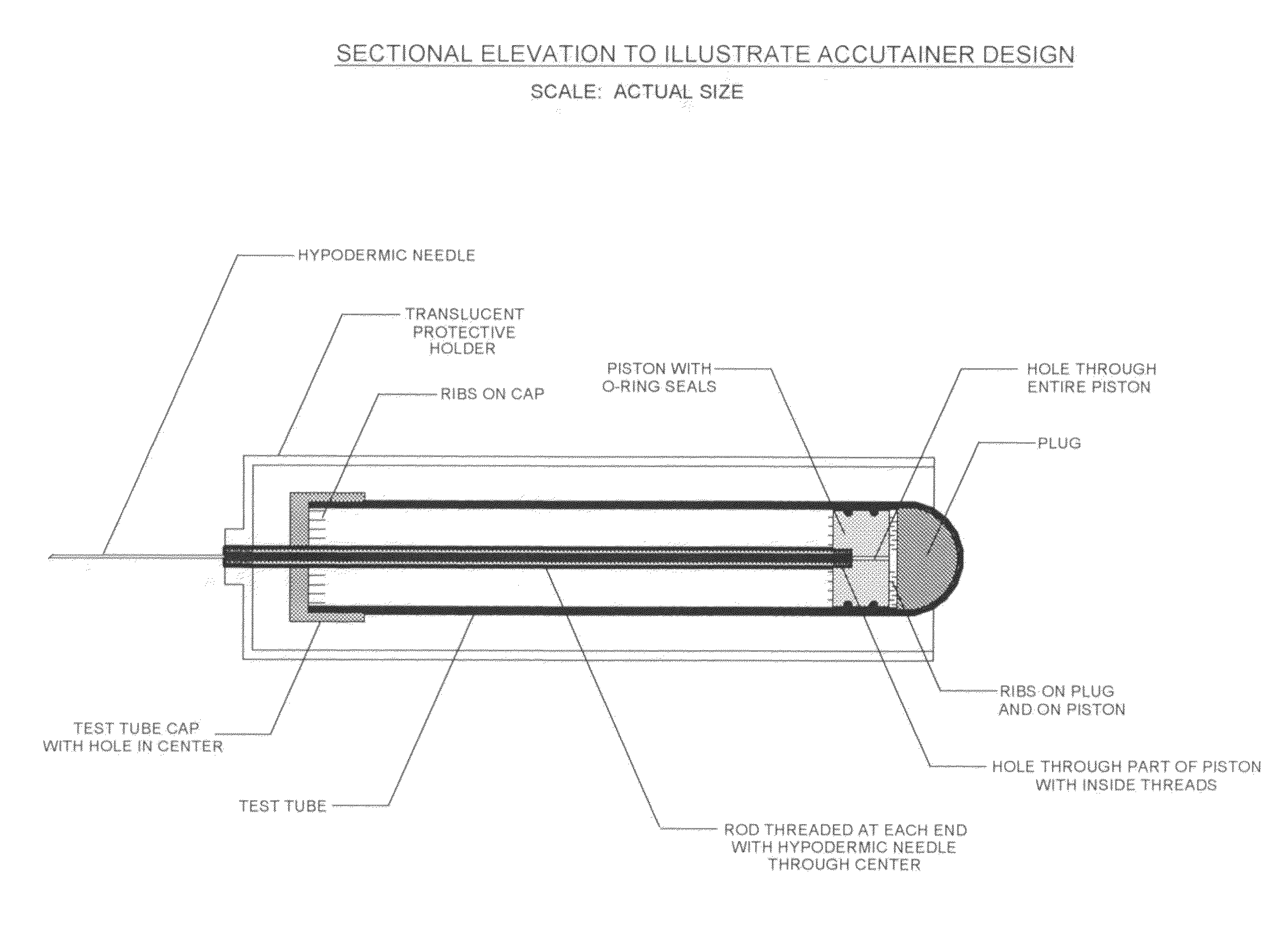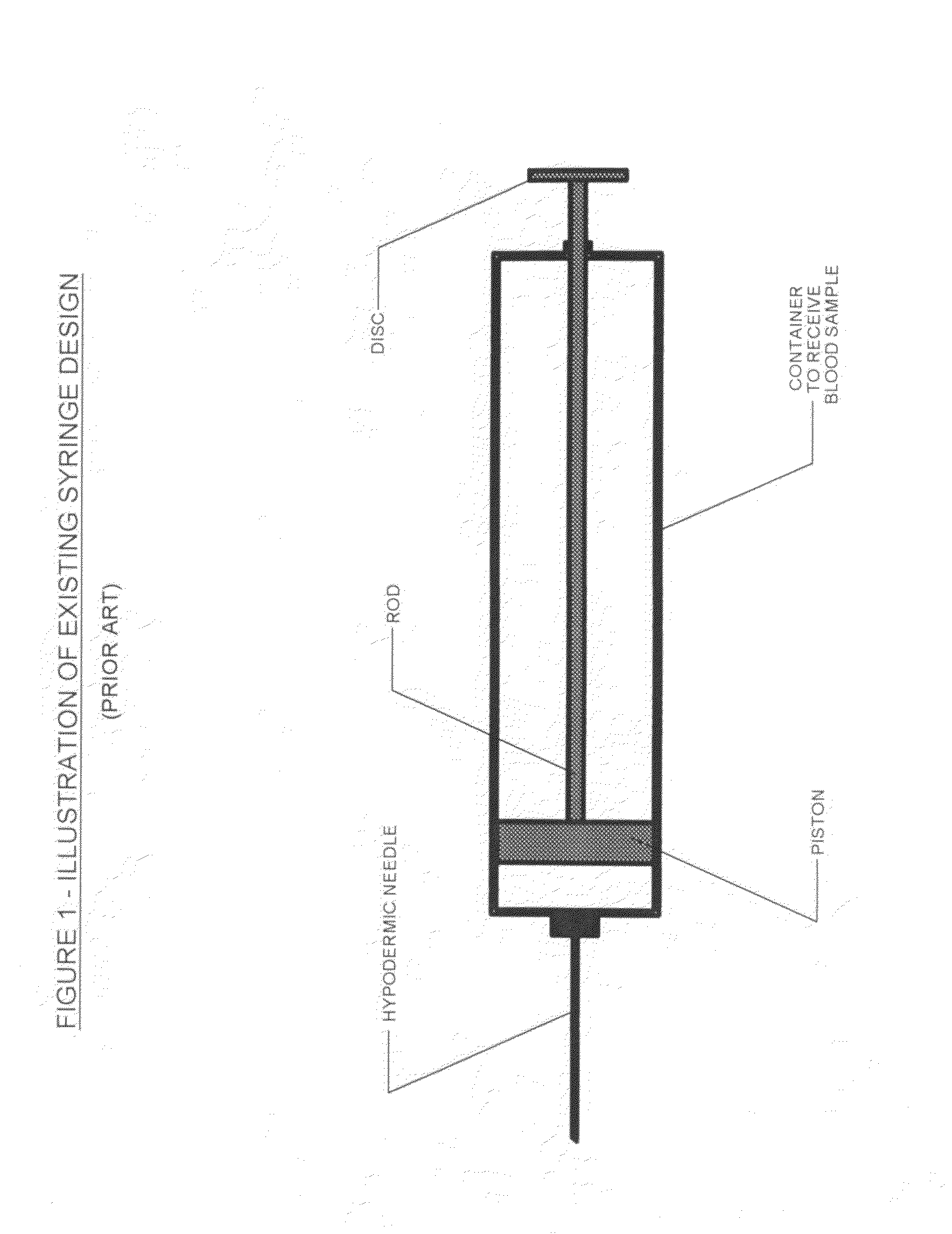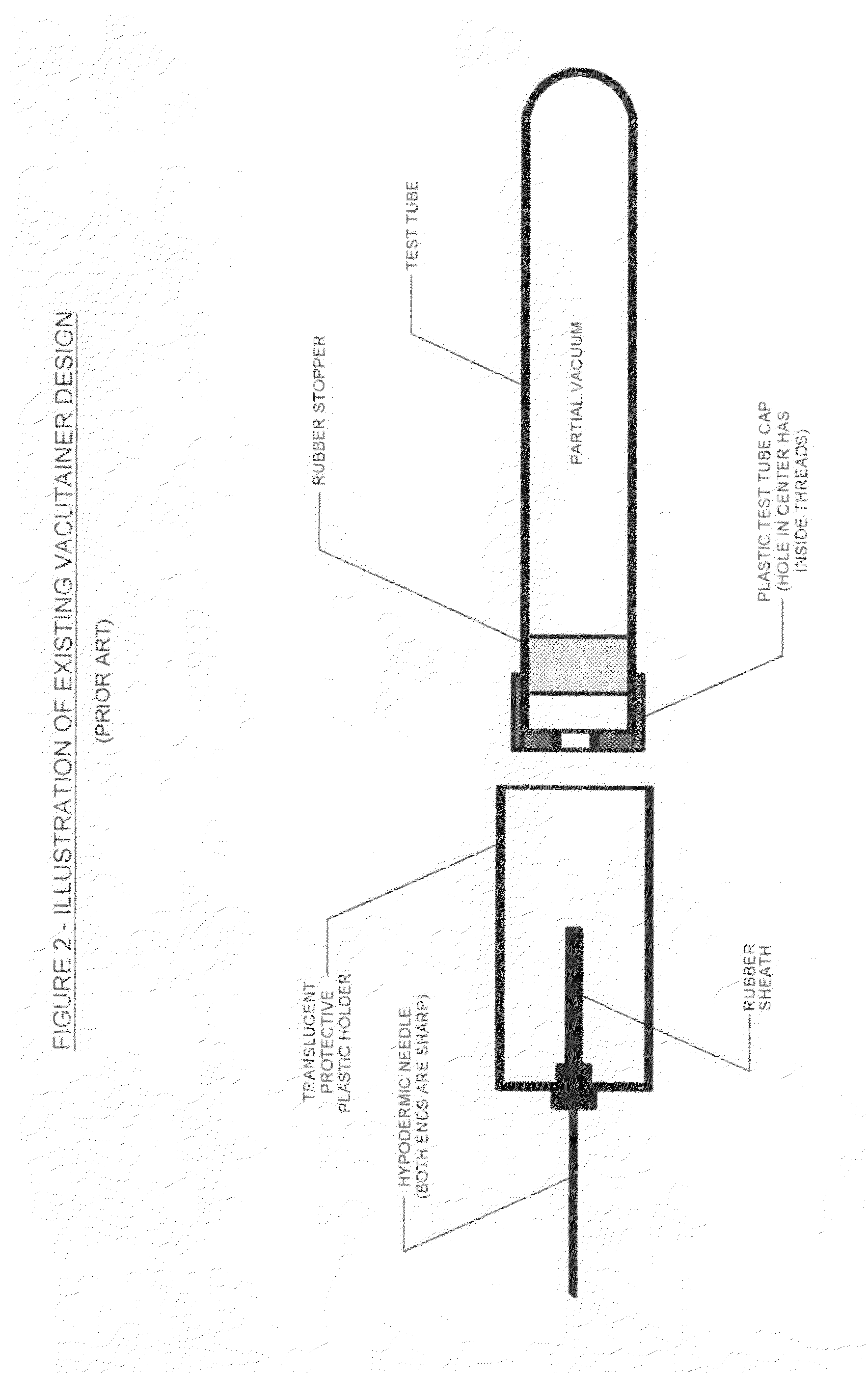Accutainer
a technology of accutainer and accutane, which is applied in the field of accutane, can solve the problems of increasing the pain or discomfort experienced by the person or animal from which the sample is obtained, the blood sample is generally transferred twice, and the hypodermic needle is generally pushed, so as to achieve the effect of accurate blood volume, more consistent or repeatable sample volume, and safer use for peopl
- Summary
- Abstract
- Description
- Claims
- Application Information
AI Technical Summary
Benefits of technology
Problems solved by technology
Method used
Image
Examples
Embodiment Construction
[0025]FIG. 3 is a sectional elevation view of the preferred embodiment of the invention.
[0026]As illustrated in FIG. 3, the preferred embodiment of the invention includes a hypodermic needle partially within and attached to a plastic rod that is threaded at each end. The left end of the hypodermic needle is sharpened and extends beyond the left end of the plastic rod. The right end of the hypodermic needle extends to the right end of the plastic rod. The hypodermic needle has a hollow core and is open at both ends. The left end of the plastic rod is threaded into a translucent protective holder. The left end is threaded tightly enough so that it cannot easily be removed by rotation. An adhesive could be used to accomplish this. The right end of the plastic rod is threaded into a piston located inside a test tube.
[0027]The outside diameter of the piston is less than the inside diameter of the test tube. It has one or more O-rings to prevent or minimize the flow of gas or liquid betwe...
PUM
 Login to View More
Login to View More Abstract
Description
Claims
Application Information
 Login to View More
Login to View More - R&D
- Intellectual Property
- Life Sciences
- Materials
- Tech Scout
- Unparalleled Data Quality
- Higher Quality Content
- 60% Fewer Hallucinations
Browse by: Latest US Patents, China's latest patents, Technical Efficacy Thesaurus, Application Domain, Technology Topic, Popular Technical Reports.
© 2025 PatSnap. All rights reserved.Legal|Privacy policy|Modern Slavery Act Transparency Statement|Sitemap|About US| Contact US: help@patsnap.com



